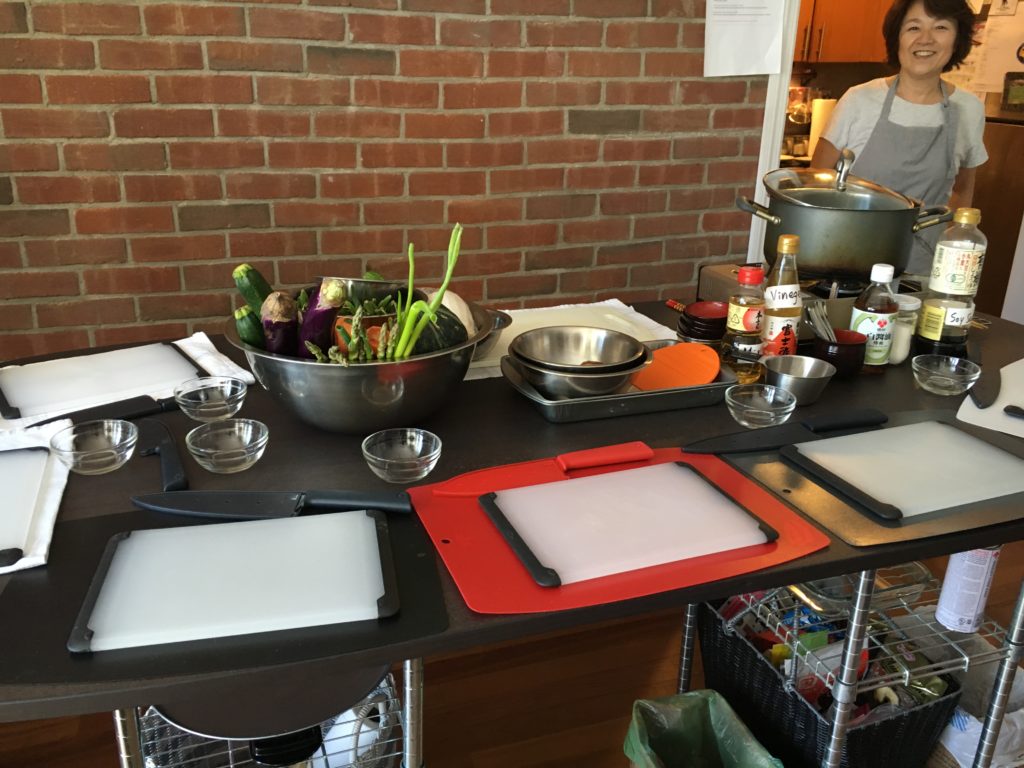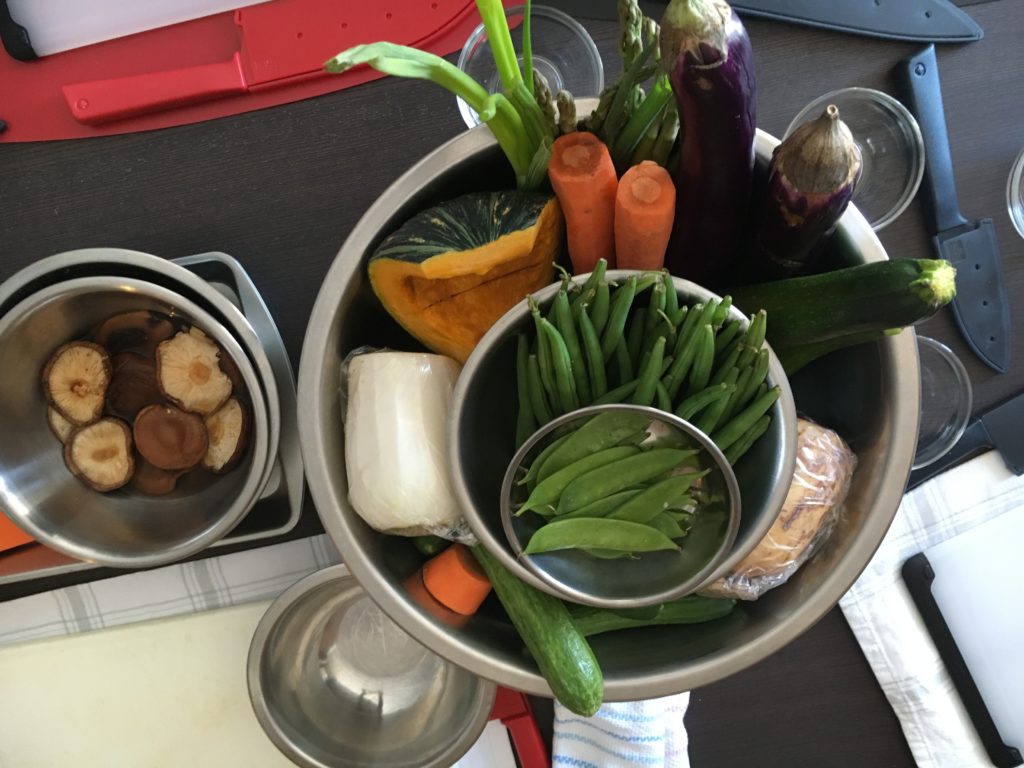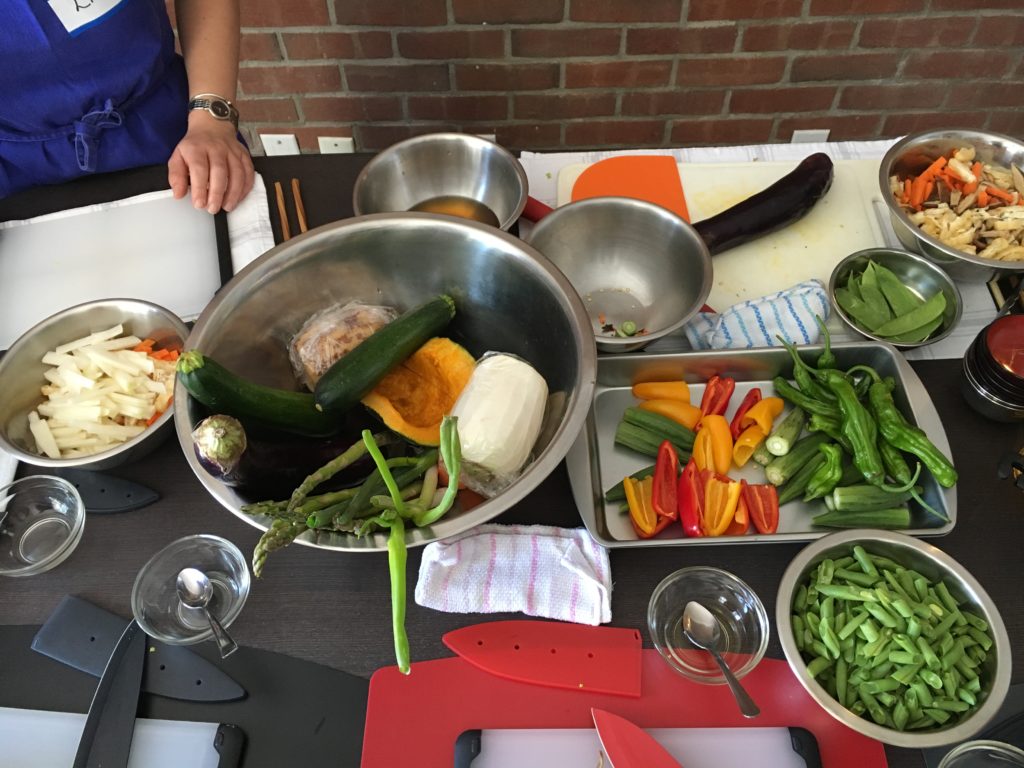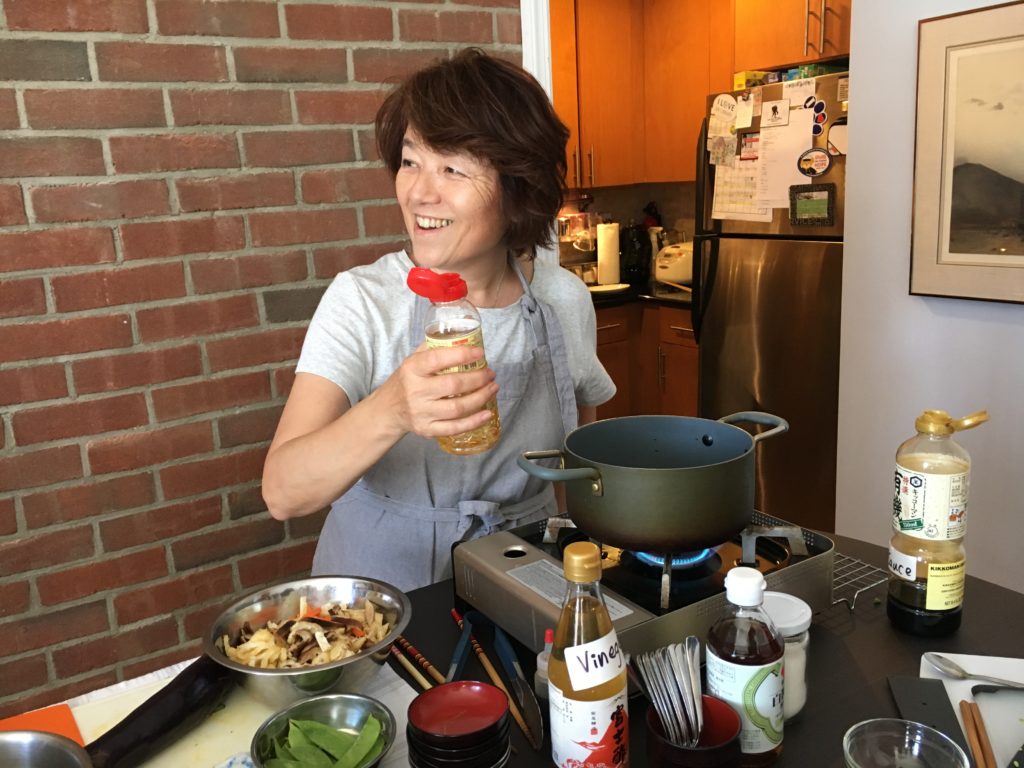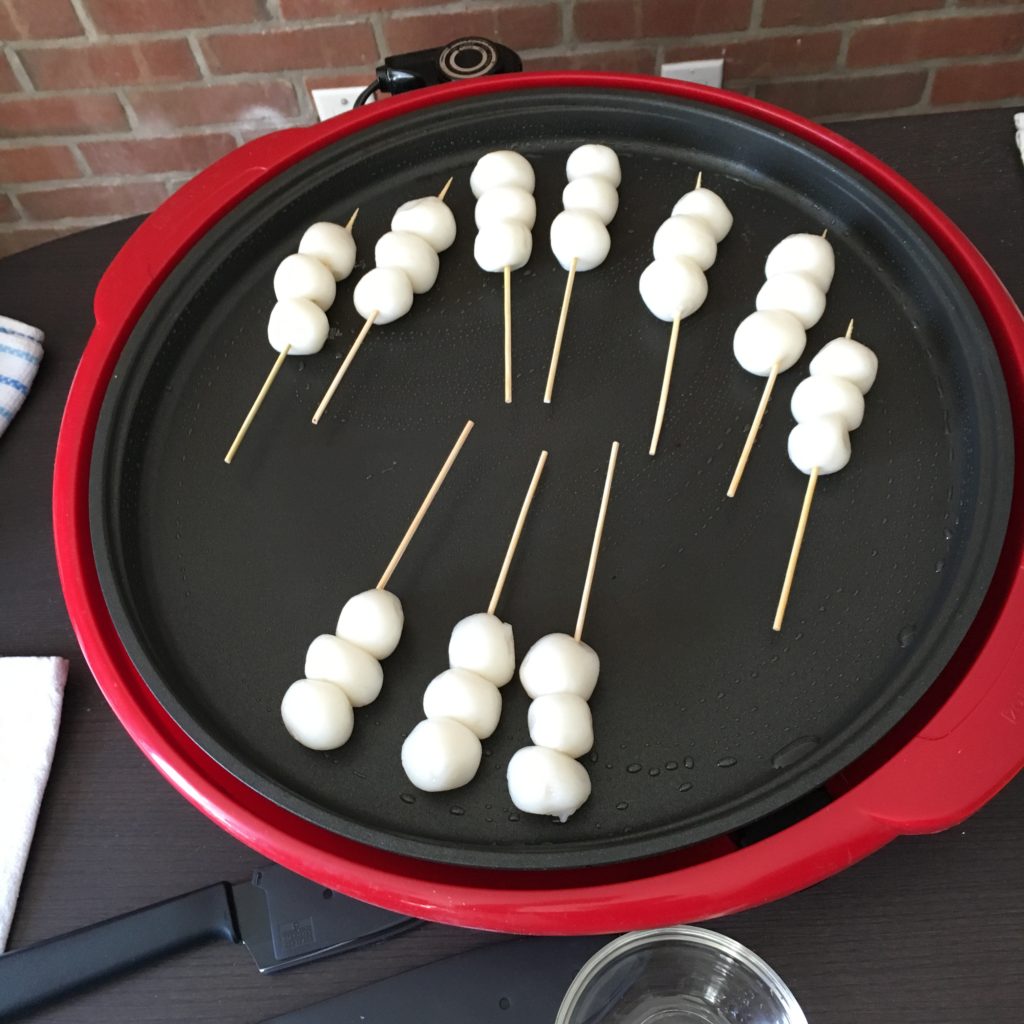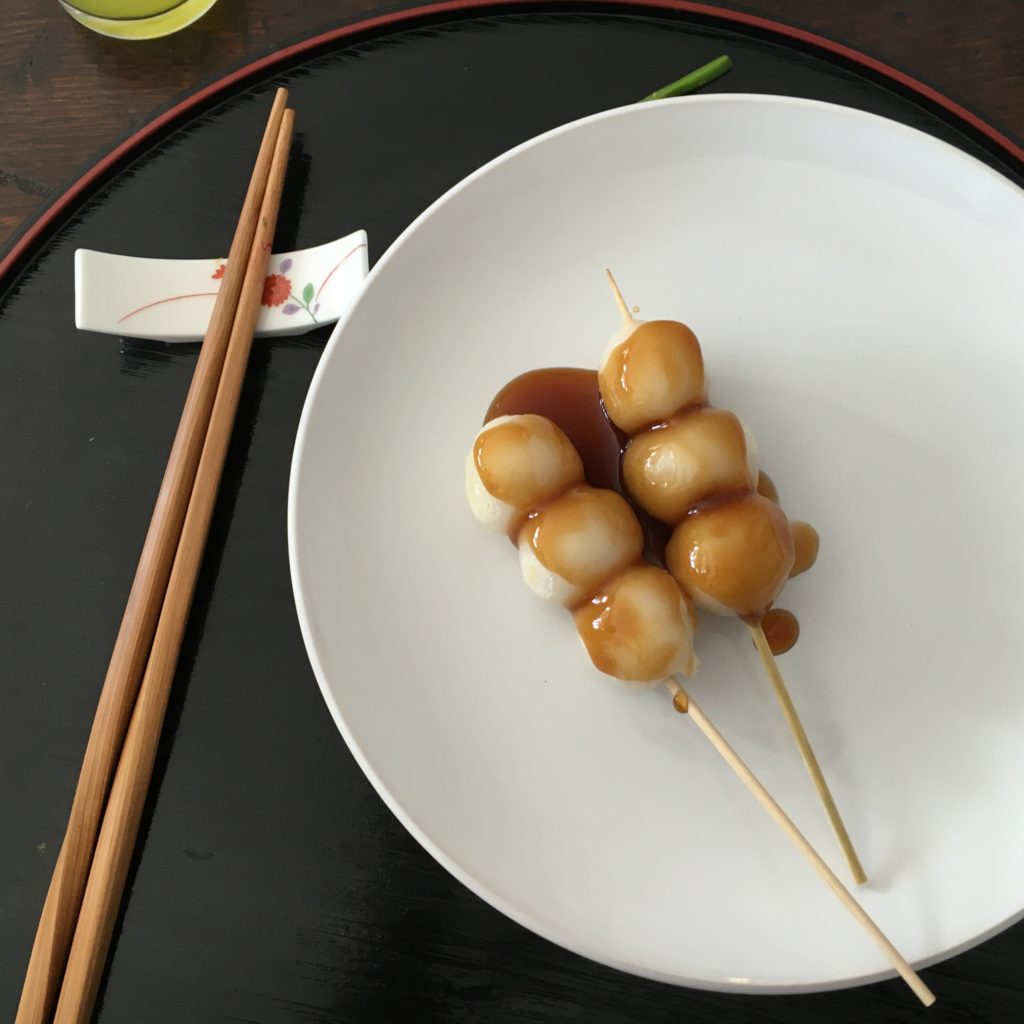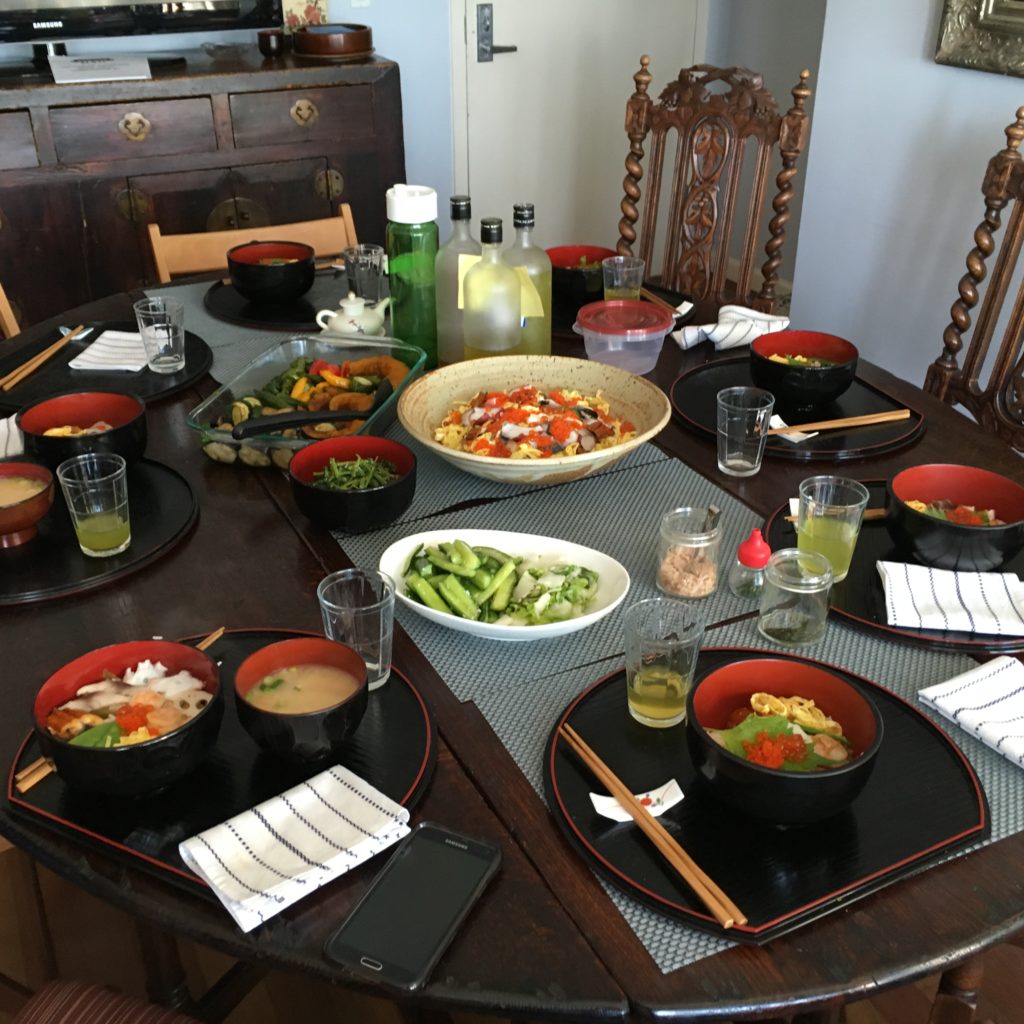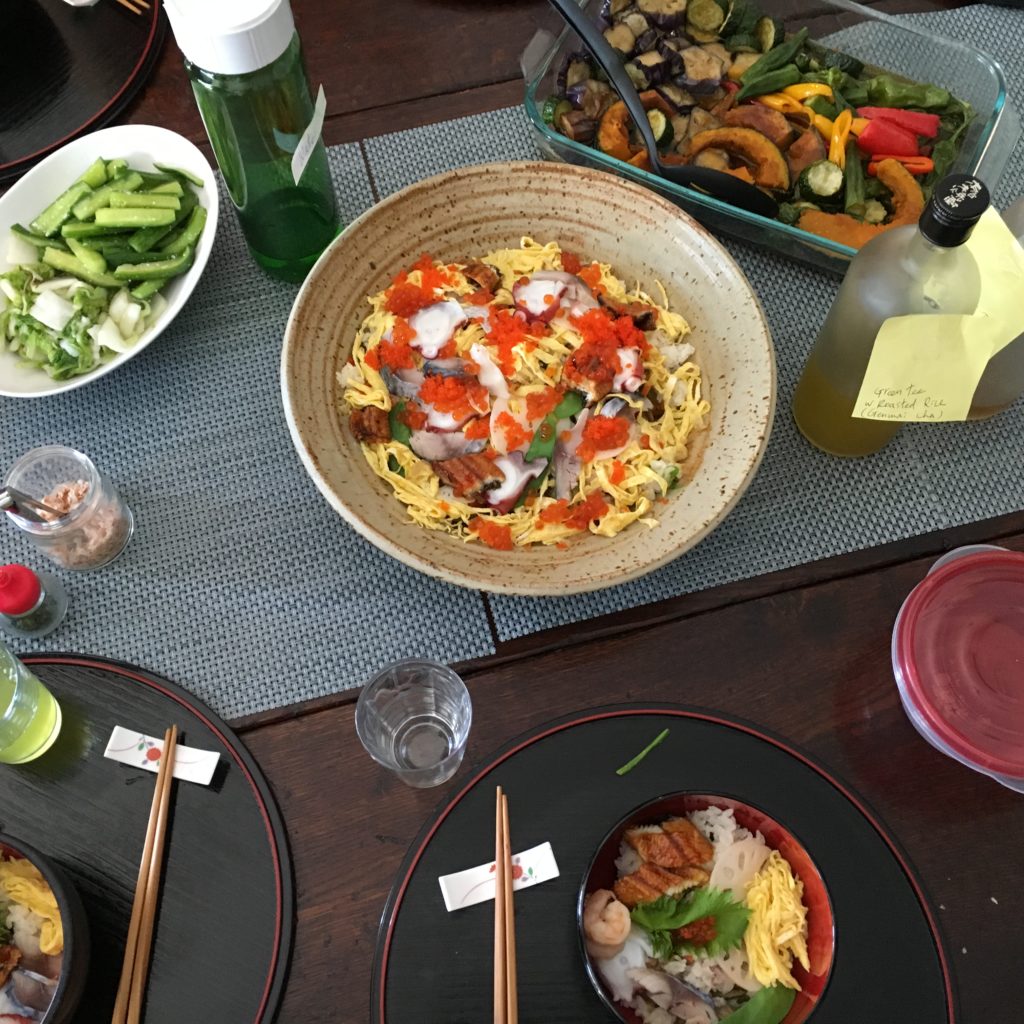Every so often, he’d share stories about being at his grandma’s house with his brothers. Twirling his hand, he showed us how he motioned his mom to interpret for him. I always wondered what that experience was like. What was it like to hear his grandma’s stories? What was it like to eat homemade Japanese food?
I finally learned what it was like when I took an immersive cooking class through The League of Kitchens. It’s an NYC-based company where immigrants teach culinary workshops in their homes. The cuisines span the globe from Asia, South and Central America, the Caribbean, and beyond.Through the class, I along with five eager New Yorkers learned about Japanese cooking. Our instructor was Aiko who grew up in rural Japan. We all watched on as she effortlessly switched between meals. Instead of grabbing seasonings, she used mirin, soy sauce, vinegar, and homemade dashi.
She began the class by telling us about life in her small town that’s known for udon noodles. While she talked about her work in D.C. and making New York home, we sipped green and barley tea.Then we got to work.
Armed with knives and cutting boards, we chopped our way through five dishes. A smorgasbord of vegetables laid in front of us with different purposes. Some vegetables were for the miso soup, some for the fried vegetables, and some for pickling.
Between each dish, we took a small break. One was for a snack called dango balls. They are balls of flour plopped on a skewer that’s covered in homemade sauce. They were the most interesting part of our meal to me because they weren’t sweet and they weren’t salty. So, I was a bit confused that it was called a snack, but also intrigued by the cultural difference.The main course was my favorite. It was sushi rice that was a medley of flavors and textures. I loved how the saltiness from the orange pearls of salmon roe seemed to burst on my tongue with each bite. The sliced egg added an earthiness to the dish especially paired with eel, salmon, and shrimp.
Chopsticks in hand, we ate like a family on Sunday evenings. The meal was filling, but not heavy at all. And even though the workshop was five hours, I didn’t want to leave. Aiko’s teaching style made each dish easy to understand and prepare. But for me, learning her story was the best part.I wondered (and still do) what would happen if we all took the time to learn other people’s stories.
To learn more about Aiko, you can try her new menu starting September 23. Also, follow The League of Kitchens on Twitter, Instagram, and Facebook.
